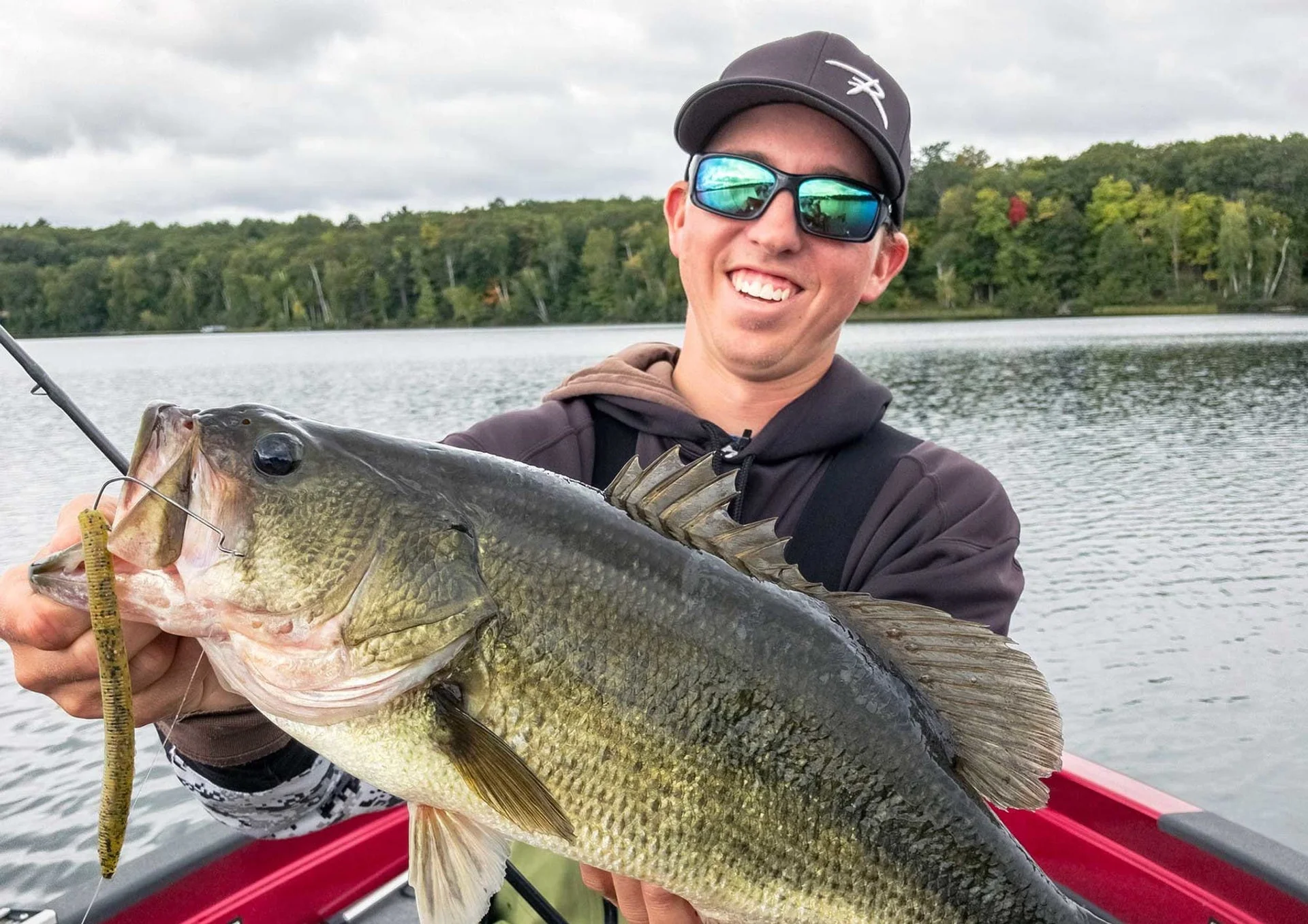When the Spawn Is On

Know how to make the most of your opportunities as you sneak your way through the spawning areas of easily spooked bass.
Spring offers bass anglers some of the year’s best opportunities, as the spawning season finds more big fish in shallow water than at any other time. Numerically, the odds of catching a bragging-rights bass peak during this period; but doing so requires an understanding of the playing field.
When: Plain and simple, bass don’t read calendars, so pay more attention to weather-related variables. Most important is water temperature. Bass will start gathering near their spawning areas when the water warms into the upper 50’s, but 60 degrees is generally considered the magic number for actual spawning. Lunar staging also factors here, with the full moon ushering fish to the bank. This part of the equation generally matters more in the early spawn, but once the water temperature moves into the mid-60’s, lakes may find bass spawning throughout the moon cycle.
During the course of a day, spawning activity may change dramatically as sunlight warms the shallows. Often is the case where anglers find a likely spawning flat barren during the morning and then return later in the day to find that a wave of fish has moved into the area.
Where: Specific spawning sites vary depending on the fishery, but bass need a few particular details. First is hard bottom such as sand, gravel or clay where their eggs can adhere until hatching. In the absence of firm substrate, lily pad roots or vegetation can suffice.
Also important is a protected area where wind and waves don’t challenge positioning or wash out the nesting site. Lastly, successful egg development requires sun exposure, so target the south-facing banks, which receive sunlight first and collect warmth throughout the day.
Stealth: From the prespawn staging until the time they move onto the beds, bass are keenly aware of their shallow water vulnerability. Therefore, the downside of spawning season opportunity is extremely spooky fish. Make the most of your opportunities by moving slowly and quietly through likely spawning areas. Drifting is optimal, but when trolling motor propulsion is needed, keep it low and avoid sudden pulses, which alert fish.
Curveballs: In the ideal scenario, bass stage outside their spawning zone, move up with favorable conditions, do their thing and depart. But spring can be a volatile time of year, with late-season cold fronts wreaking havoc on the fish’s plans. The wind and rain associated with a spring weather system can affect water clarity, but temperature fluctuations are the more serious concern. A severe cold front that drops water temperatures several degrees can put the brakes on spawning activity. The fish won’t necessarily leave the bedding zone; in fact they’ll often slide into the nearest area of deeper water and wait for favorable conditions to return. When this happens, you’ll often find fish holding in a consistent depth.
One of the most effective techniques for covering water right outside the spawning shallows is swimming a worm. Ribbontails or gator tail worms rigged on a Mustad Big Bite Soft Plastics Hook with a light weight present an appealing profile to fish that are eager to pack on a little more weight before resuming their spawn.
